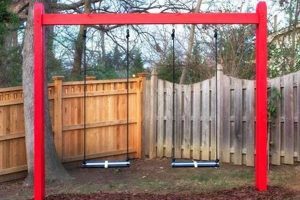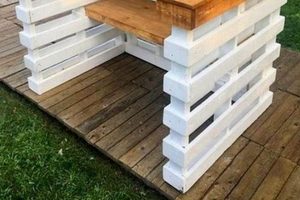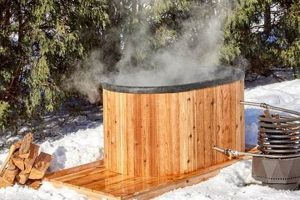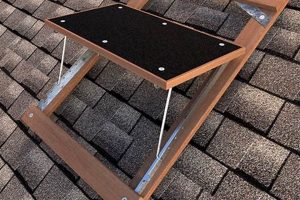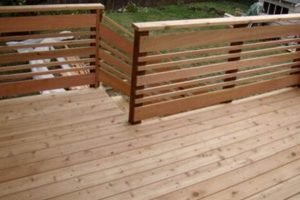A self-constructed platform designed to hold a woodworking tool, specifically a router, upside down, transforming it into a stationary shaping machine. This structure typically includes a flat surface with an opening for the router bit to protrude, along with features like a fence for guiding workpieces and potentially dust collection mechanisms. The resulting setup facilitates more controlled and precise routing operations compared to using the handheld router alone. As an example, it enables creating consistent profiles on multiple pieces of lumber or accurately cutting dados and rabbets.
This type of personalized workbench offers several advantages. Fabricating one independently allows for customization to specific needs and available space, resulting in a tailored solution that commercial options may not provide. There are potential cost savings associated with this approach, especially by utilizing readily available materials. Historically, woodworkers have adapted tools and created jigs to improve accuracy and efficiency; this is a continuation of that tradition, fostering innovation and resourcefulness within the craft.
The following sections will delve into material selection, construction techniques, essential features, and safety considerations necessary for building a functional and reliable unit. The aim is to provide a clear understanding of the process, enabling woodworkers to confidently create their own customized routing station.
Construction Considerations
The following recommendations are intended to guide the construction process, ensuring a durable, precise, and safe apparatus.
Tip 1: Material Selection: Opt for dense, stable materials such as medium-density fiberboard (MDF) or hardwood plywood for the table surface. These materials resist warping and provide a smooth, consistent surface for routing operations.
Tip 2: Router Mounting Plate: Utilize a phenolic resin or aluminum plate for mounting the router. These materials offer superior flatness and dimensional stability compared to plastic, reducing vibration and ensuring accurate bit alignment.
Tip 3: Fence Design: Incorporate an adjustable fence system with a robust locking mechanism. The fence should be perpendicular to the table surface and allow for fine-tuning adjustments to achieve precise cuts.
Tip 4: Dust Collection Integration: Integrate a dust collection port below the table and another at the fence. Effective dust extraction improves visibility, reduces cleanup, and minimizes airborne particulate exposure.
Tip 5: Miter Slot: Include a standard-sized miter slot for use with miter gauges and other accessories. This enhances versatility and allows for more complex routing operations.
Tip 6: Sturdy Base: Construct a solid base to support the table and minimize vibration. A heavy base with adjustable feet ensures stability on uneven surfaces.
Tip 7: Switch Placement: Mount a remote power switch within easy reach. This allows for quick and safe shutdown of the router in case of emergency.
A carefully considered design and meticulous construction process are paramount to achieving a functional and safe apparatus. Paying attention to these details will result in a more reliable and enjoyable woodworking experience.
The subsequent section will discuss safety protocols, emphasizing the importance of responsible operation to minimize risks and prevent injuries.
1. Surface Flatness
Surface flatness is a foundational requirement for a functioning woodworking apparatus. It serves as the reference plane against which workpieces are guided during routing operations. Any deviation from a true, level surface introduces inaccuracies in the cuts, rendering the entire setup less effective. The cause-and-effect relationship is direct: uneven surface results in inconsistent depth of cut and skewed profiles.
The significance of surface flatness is best illustrated through examples. When creating a dado or rabbet, an uneven surface will cause the router bit to cut at varying depths, leading to a joint that is not square or uniform. Similarly, when creating decorative edge profiles, imperfections in the surface flatness will translate into noticeable inconsistencies in the final profile. Professional woodworkers often use precision-ground cast iron surfaces for their machinery to ensure the highest degree of accuracy; this underscores the importance of a flat surface in achieving professional-quality results.
Achieving and maintaining surface flatness presents a challenge in this particular DIY project. Material selection is critical; dense, stable materials like MDF or hardwood plywood are less prone to warping than solid wood. The construction method is also vital; proper bracing and reinforcement prevent sagging and deformation over time. Regular inspection and maintenance are necessary to address any surface imperfections that may develop. In summary, surface flatness is not merely a desirable attribute, but a fundamental prerequisite for this tool. Neglecting it compromises its utility and accuracy.
2. Fence Accuracy
Fence accuracy is a paramount consideration in a self-constructed routing workstation. It directly impacts the precision of cuts and the overall quality of the finished workpiece. The fence serves as a guide, dictating the path of the material as it is passed across the rotating router bit. A fence that is not perfectly straight, parallel to the router bit, or securely locked in place will introduce errors, resulting in inaccurate dimensions and compromised joinery. Consequently, the value of the workstation as a precision woodworking tool is diminished.
Consider the task of cutting a groove for a drawer bottom. If the fence is misaligned, the resulting groove will not be of uniform width, causing the drawer bottom to fit improperly. Similarly, when creating raised panel doors, any inaccuracies in fence positioning will lead to uneven reveals and a visually unappealing final product. Professional cabinet makers rely on precisely calibrated fences on their routing tables to produce consistent, repeatable results; replicating this level of accuracy in a self-made unit is therefore critical. Furthermore, an inaccurate fence can pose safety risks. If the workpiece is not properly supported and guided, it can be kicked back by the router bit, potentially causing injury.
Therefore, achieving and maintaining fence accuracy requires careful attention to detail during design and construction. The fence should be made from a stable material, such as hardwood or aluminum, and be designed with a robust clamping mechanism to ensure it remains securely in position. Regular checks with a precision square are necessary to verify alignment. Incorporating micro-adjustment features can also be beneficial, allowing for fine-tuning of fence position. In conclusion, an accurate fence is not merely a desirable attribute; it is an essential component that determines the utility, precision, and safety of a self-constructed routing workstation.
3. Router Security
Router security is paramount when constructing a self-built woodworking station. The safe and reliable operation hinges on the secure and proper mounting of the router within the structure. Insufficient attention to this aspect creates significant safety hazards and compromises the functionality of the entire assembly.
- Secure Mounting Plate Interface
The interface between the router and the mounting plate is critical. The mounting plate must be of sufficient thickness and rigidity to prevent flexing or vibration during operation. The router must be securely fastened to the plate using appropriately sized hardware and a well-engineered attachment method. For example, recessed bolts with locking washers are preferable to simple screws, as they provide greater resistance to loosening under the stresses of vibration and torque. Failure to ensure a rigid and stable connection at this point can lead to bit misalignment, chatter, and, in extreme cases, the router detaching from the table during operation, posing a severe risk of injury.
- Router Base Compatibility and Fit
The router’s base design directly impacts how securely it can be mounted to the plate. Routers with flat bases and multiple mounting points offer greater stability than those with irregular shapes or limited mounting options. Shimming may be required to ensure the router base sits flush against the mounting plate, eliminating any rocking or play. It’s also important to ensure the router base doesn’t interfere with the table’s dust collection or other integrated features. Adapting designs or choosing specific router models based on base compatibility is key to a secure build.
- Motor Housing Stability
Beyond the base, the router’s motor housing must also be considered for security. Some router designs feature housings that can loosen over time due to vibration. Reinforcing the motor housing or using additional supports may be necessary to prevent this from occurring. For instance, a custom-fabricated bracket can be added to brace the motor housing against the table’s frame, providing extra stability and preventing movement. Neglecting this aspect of router security can lead to inconsistent cutting depths and premature wear on the router.
- Power Cord Management and Safety
The power cord should be routed and secured to prevent it from interfering with the router bit or becoming entangled in the moving parts of the workstation. A strain relief mechanism should be incorporated where the cord enters the router housing to prevent damage or disconnection. Additionally, a readily accessible kill switch should be installed to allow for immediate power shutoff in case of emergency. These precautions are essential for minimizing the risk of electrical shock or fire.
The facets of router security are integral to the overall safety and performance of a homemade routing table. Each aspectthe mounting plate interface, base compatibility, motor housing stability, and power cord managementcontributes to a stable, secure, and safe woodworking experience. Compromising on any of these points jeopardizes not only the quality of the work but also the well-being of the operator.
4. Dust Control
Effective particulate management is a crucial element of woodworking, particularly when utilizing a self-constructed routing station. The nature of routing operations generates significant quantities of fine dust particles, posing potential health hazards and impacting visibility. Therefore, integrating effective dust collection mechanisms is essential for both safety and efficiency.
- Health Implications of Wood Dust Exposure
Prolonged exposure to wood dust can lead to various respiratory ailments, including asthma, bronchitis, and in some cases, nasal cancer. Different wood species produce dust with varying levels of toxicity, further compounding the risk. A properly designed dust collection system minimizes the inhalation of these harmful particles, safeguarding the operator’s respiratory health. The absence of such a system necessitates the use of personal protective equipment (PPE), such as respirators, but this is a less effective and less desirable solution than source capture.
- Visibility and Precision Routing
The accumulation of sawdust on the workpiece obscures the cutting line, hindering accurate routing. This is particularly problematic when performing intricate operations or following detailed patterns. An efficient dust collection setup removes debris as it is generated, ensuring clear visibility and enabling precise control over the router. This, in turn, reduces the likelihood of errors and improves the overall quality of the finished product. For instance, when routing dovetail joints, clear visibility is critical for achieving a tight and accurate fit.
- Shop Cleanliness and Maintenance
Uncontrolled dust accumulates on surfaces throughout the workshop, creating a messy and potentially hazardous environment. Fine dust particles can settle on machinery, interfering with its operation and increasing the risk of mechanical failure. A dedicated dust collection system minimizes the spread of dust, simplifying cleanup and reducing the need for frequent maintenance. This contributes to a more organized and efficient workspace, extending the lifespan of tools and equipment. This directly impacts the long-term cost effectiveness and operational efficiency of the workshop.
- Integrated Dust Port Design and Implementation
Integrating dust collection ports directly into the routing table’s design is critical. A port positioned below the router table, connected to a dust collector, captures the majority of the dust generated during routing. Furthermore, an additional port integrated into the fence system can capture dust thrown forward by the router bit. Optimizing the size and placement of these ports, along with the selection of appropriate hoses and connectors, maximizes dust collection efficiency. The implementation should also consider airflow dynamics to efficiently capture as much dust as possible directly at the source.
The integration of a robust dust control system within a self-made routing station is not merely an optional addition, but an essential safety and efficiency measure. By mitigating health risks, improving visibility, simplifying maintenance, and optimizing dust port design, woodworkers can create a safer, cleaner, and more productive working environment, while also enhancing the quality of their finished projects.
5. Switch Accessibility
Safe and efficient operation of a self-constructed routing workstation is significantly influenced by the accessibility of the power switch. Placement and type of switch determine the operator’s ability to quickly deactivate the router in an emergency or during routine adjustments. Convenient switch access is not merely a matter of convenience; it is a critical safety feature.
- Remote Switch Placement and Ergonomics
The location of the power switch should allow for immediate activation or deactivation without requiring the operator to reach awkwardly or move the workpiece. Mounting a remote switch, easily accessible from the front of the workstation, is preferable to relying on the switch located directly on the router itself. The switch should be large enough to be easily manipulated, even with gloved hands, and should provide clear tactile feedback to confirm activation or deactivation. For example, a large paddle switch mounted to the front of the workbench offers an easily accessible and intuitive means of controlling power to the router.
- Emergency Stop Functionality
The switch should ideally function as an emergency stop, cutting power to the router instantly in the event of a kickback, bit failure, or other unforeseen circumstance. A mushroom-head push-button switch or a similar design that can be easily struck in an emergency provides a rapid and reliable means of deactivating the router. This is particularly crucial when working with smaller or irregularly shaped workpieces, where the risk of kickback is higher. Consider a scenario where a workpiece is caught by the router bit and violently ejected; an easily accessible emergency stop can prevent further injury or damage.
- Switch Type and Reliability
The type of switch selected should be rated for the amperage draw of the router and should be of a durable construction to withstand frequent use and accidental impacts. A heavy-duty toggle switch or a push-button switch with a robust mechanical linkage is preferable to a low-quality switch that may fail or become unreliable over time. Selecting a switch with Underwriters Laboratories (UL) or other relevant safety certifications provides assurance of its quality and reliability. A failed switch during a critical operation can lead to inaccurate cuts or, in extreme cases, hazardous situations.
- Wiring and Electrical Safety
Proper wiring and grounding of the switch are essential to prevent electrical shock hazards. All wiring should be enclosed in conduit or other protective sheathing, and connections should be made using secure terminals and wire connectors. A qualified electrician should be consulted if there is any doubt about the proper wiring procedures. Neglecting electrical safety can result in serious injury or death. For instance, improper grounding can cause the metal components of the routing table to become energized, posing a significant electrocution risk.
The accessibility of the power switch is a key factor in the safe and efficient operation of a self-constructed routing apparatus. Careful consideration of switch placement, functionality, reliability, and wiring is essential to minimizing risks and maximizing the utility of the workstation. Proper implementation transforms a potentially hazardous tool into a safer and more productive asset within the workshop. By prioritizing ease of access and immediate shut-off capability, woodworkers enhance both their safety and the quality of their craft.
6. Base Stability
Base stability is a foundational requirement for a functional and safe woodworking platform incorporating a router. The relationship between a stable base and the operation of a routing setup is direct: instability introduces vibration and movement, negatively impacting the precision of cuts and potentially creating hazardous working conditions. The table’s base serves as the anchor, absorbing forces generated by the rotating router bit and the movement of the workpiece. Without adequate stability, these forces translate into unwanted movement, leading to inaccurate profiles, uneven surfaces, and increased risk of kickback. This underscores the critical nature of a robust and stable base for a self-constructed routing workstation.
Consider the task of creating a mortise and tenon joint using a routing table. Precise cuts are crucial for a strong and aesthetically pleasing joint. If the base is unstable, even slight vibrations will cause the router bit to waver, resulting in an ill-fitting mortise. Similarly, when creating decorative edge profiles, an unstable base will lead to inconsistencies in the profile’s depth and shape. In professional woodworking settings, heavy, cast-iron bases are commonly used for stationary power tools to minimize vibration and ensure accuracy. This highlights the importance of replicating, to the extent possible, the inherent stability found in professional-grade equipment, even in a do-it-yourself context. Practical applications extend beyond precision joinery; a stable base contributes to operator comfort and reduces fatigue during prolonged use.
In conclusion, base stability is not merely a desirable attribute of a self-built routing apparatus; it is a prerequisite for safe, accurate, and efficient woodworking. The challenges associated with achieving adequate base stability often involve careful material selection, thoughtful design, and meticulous construction techniques. This understanding links directly to the broader theme of woodworking, where foundational principles of stability and precision are paramount to producing high-quality results and ensuring operator safety.
Frequently Asked Questions
The following addresses common inquiries regarding the construction and utilization of a personalized routing setup.
Question 1: What are the fundamental advantages of a self-made routing station versus a commercially available model?
A self-constructed unit offers tailored customization to specific woodworking needs and spatial constraints. Further, the construction process allows for potentially lower costs by utilizing readily available or reclaimed materials. The design allows the woodworker to choose the exact feature set needed. Commercial options may be more expensive or offer features not required.
Question 2: What materials are most suitable for the construction of a long-lasting and accurate routing surface?
Dense and dimensionally stable materials, such as medium-density fiberboard (MDF) or hardwood plywood, are preferred. These materials resist warping and provide a smooth, consistent surface crucial for accurate routing operations. Solid wood can be used, but requires careful selection and treatment to avoid movement over time. The surface must be durable to withstand constant rubbing from various wood works
Question 3: What are the most important safety considerations when utilizing a self-constructed routing mechanism?
Critical safety measures include securing the router firmly to the mounting plate, integrating a readily accessible power switch, implementing effective particulate extraction, and ensuring the stability of the overall structure. Additionally, the operator must use appropriate personal protective equipment, such as eye and ear protection, and adhere to safe routing practices, such as feeding the workpiece against the rotation of the router bit.
Question 4: How crucial is dust management, and what are the most effective strategies for its implementation?
Effective particulate management is essential for respiratory health and maintaining clear visibility during routing. Integrating a dust port below the table and another at the fence, connected to a suitable dust collection system, provides optimal extraction. The shop and room must be sanitized, so the wood dust will not spread to other room.
Question 5: What methods exist for ensuring the fence remains square and parallel to the router bit?
Employing a precision square to verify fence alignment is necessary. The fence should be constructed from a rigid material and incorporate a robust locking mechanism. Micro-adjustment features can be added to facilitate fine-tuning of the fence position. It must be recalibrated frequently and kept clean.
Question 6: How can the base stability be improved to minimize vibration and movement during operation?
Constructing a heavy and rigid base, utilizing vibration-dampening materials, and incorporating adjustable feet to level the structure on uneven surfaces are effective strategies. The dimensions of the supporting structure should be sufficient to support the full size and weight requirements of the wood works.
These FAQs are intended to clarify fundamental aspects of creating a personalized routing platform, emphasizing safety, precision, and long-term reliability. Careful attention to these areas contributes to an enhanced woodworking experience.
The following sections will delve into advanced techniques and specialized applications of self-made routing stations.
DIY Wood Router Table
The preceding discussion has systematically examined the multifaceted aspects of a self-constructed routing platform. The importance of material selection, fence accuracy, router security, effective particulate extraction, switch accessibility, and overall structural stability were all considered. The construction and utilization of this tooling modification demands a thorough understanding of woodworking principles and a commitment to safe practices.
The ability to create a personalized routing setup empowers woodworkers with greater control and customization options, ultimately enabling a higher degree of precision and efficiency. The information is provided to facilitate informed decision-making and responsible construction, thereby contributing to both the quality of craftsmanship and the safety of the working environment. Therefore, the craftsman should take all precautions necessary before using this construction.


